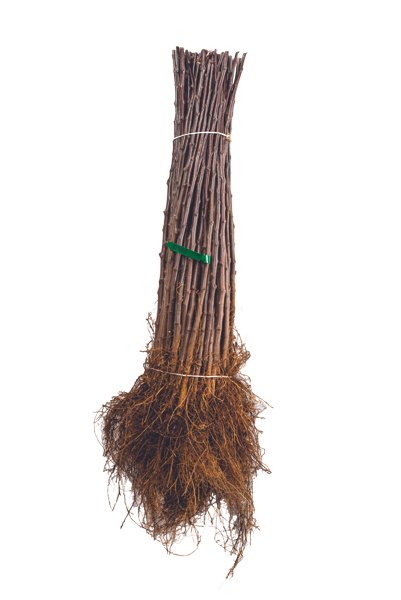 Image 1 of 2
Image 1 of 2

 Image 2 of 2
Image 2 of 2



EMLA 26
Malling 26 was bred at East Malling from a cross between M-9 and the very vigorous rootstock M-16 (Metziner Ideal). A virus-indexed EMLA clone was introduced by East Malling in 1969 / 1970.
Pricing | Inventory
-
Malling 26 was bred at East Malling from a cross between M-9 and the very vigorous rootstock M-16 (Metziner Ideal). A virus-indexed EMLA clone was introduced by East Malling in 1969 / 1970.
-
Scions on EMLA 26 are intermediate in vigor between EMLA 9 and EMLA 7 and producing a tree about 45% the size of that on seedling rootstocks. Compared with EMLA 7, EMLA 26 is slightly less vigorous and superior, in that it produces better quality fruit and also crops earlier in the life of the tree.
Trees on EMLA 26 are not particularly sensitive to mineral deficiencies, but are known to produce fruit lower in calcium than those on other rootstocks. Although the roots on EMLA 26 are less brittle than those of EMLA 9, trees require permanent staking on exposed sites. Elsewhere, staking may not be necessary if the trees are planted a few inches deeper than in the nursery. The rootstock stem piece develops large burrknots, so the trees should be planted with the union a few inches above ground level.
-
EMLA 26 is not resistant to collar rot (Phytophthora cactorum) and should not be planted on wet or infected soils. It is also subject to fire blight (Erwinia amylovora) in the eastern United States.
-
EMLA 26 roots well in the stoolbed. Lined-out rootstocks caliper rapidly. It may be necessary to remove lower branches in the spring to facilitate budding later in the year.
-
EMLA 26 is recommended for use on all but badly drained soils. It is particularly valuable as a dwarfing stock where satisfactory performance on M-9 is in doubt. It is useful for high density plantings. When budded with spur-type scions, EMLA 26 should be planted on soils of higher fertility. EMLA 26 is not as vigorous as EMLA 7, but is much easier to manage in the orchard.
